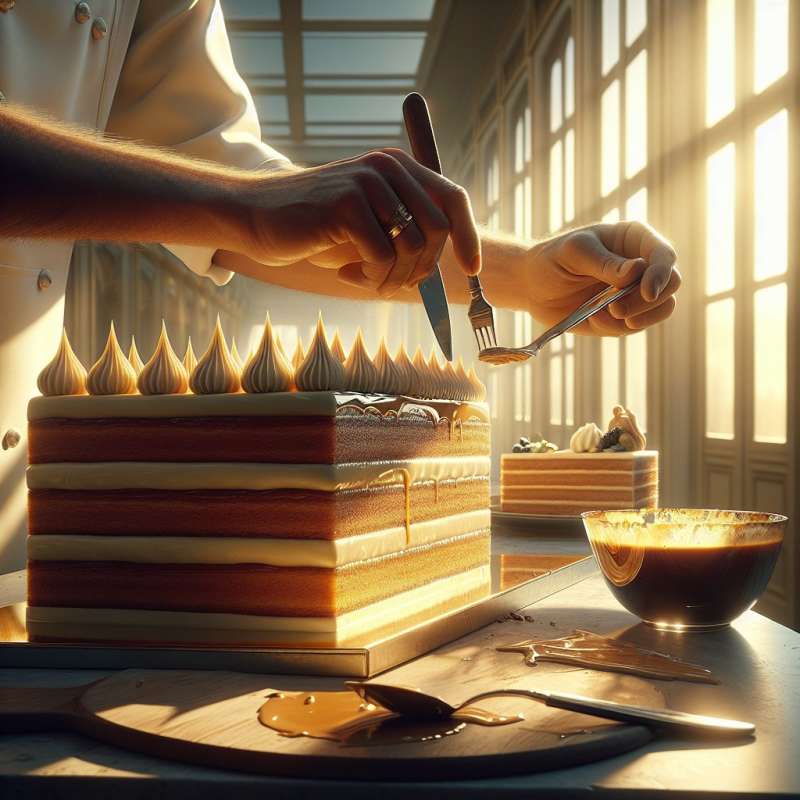
Opera Cake Origins
The Opera Cake's roots trace back to Paris, early 20th century. While its exact origin is murky, some associate it with the famous Paris Opera. This layered cake is a symphony of almond sponge, coffee, and chocolate.
Almond Sponge Creation
Almond sponge, also known as Joconde, is the cake's foundation. Made from ground almonds, sugar, eggs, and flour, it's lightly baked to attain a springy texture. Surprisingly, its name refers to the Mona Lisa in Italian.
The Coffee Influence
Coffee syrup isn't just flavor; it's a nod to French culinary tradition. Brushed onto each sponge layer, it moistens and infuses the cake with a robust coffee aroma, balancing the sweet almond and rich chocolate.
Ganache vs. Buttercream
Traditional opera cake involves chocolate ganache and coffee buttercream. Ganache is a velvety blend of chocolate and cream, whereas buttercream combines butter with coffee-infused syrup, creating a silky texture with a caffeine kick.
Layering Artistry
Layering is an art in Opera Cake, usually six to eight thin layers. Alternating between Joconde, coffee syrup, buttercream, and ganache, each must be precise in thickness, contributing to the cake's elegance and complexity.
Iconic Chocolate Glaze
The cake's crowning glory is its glossy chocolate glaze. It not only adds a smooth finish but also counterbalances the coffee's bitterness. The glaze requires precise tempering to achieve the characteristic sheen and snap.
Serving and Preservation
Opera Cake is best served at room temperature to appreciate its full range of textures and flavors. Surprisingly, it freezes well. Wrap in film and foil to enjoy this decadent dessert over time, without losing its luxurious character.
Where do Opera Cake origins trace back?
20th-century Italian bakery
Early Paris, 20th century
Vienna in the 18th century
Company